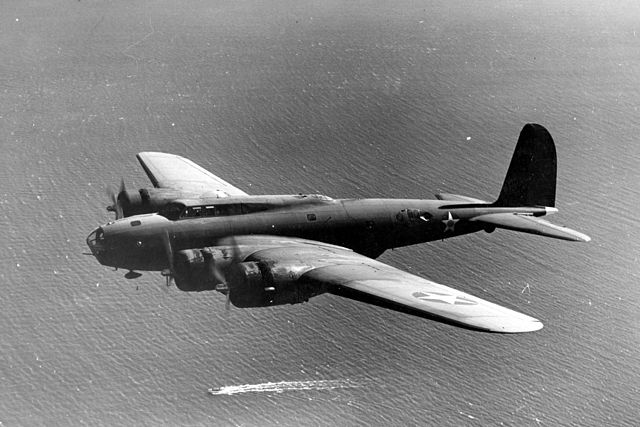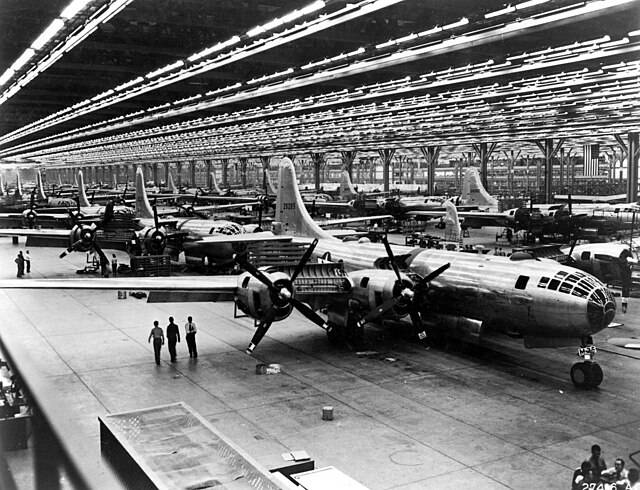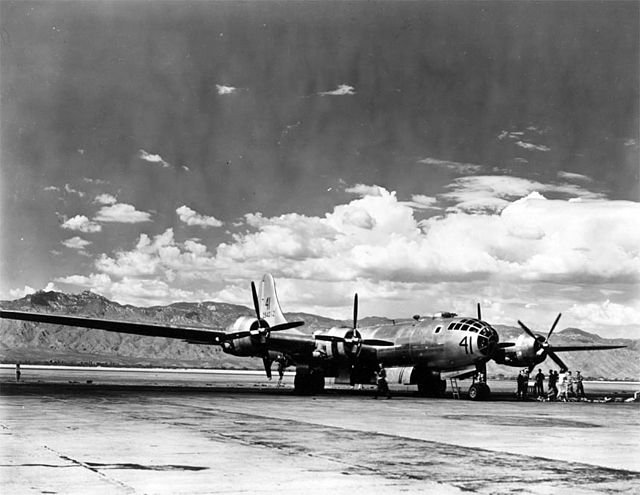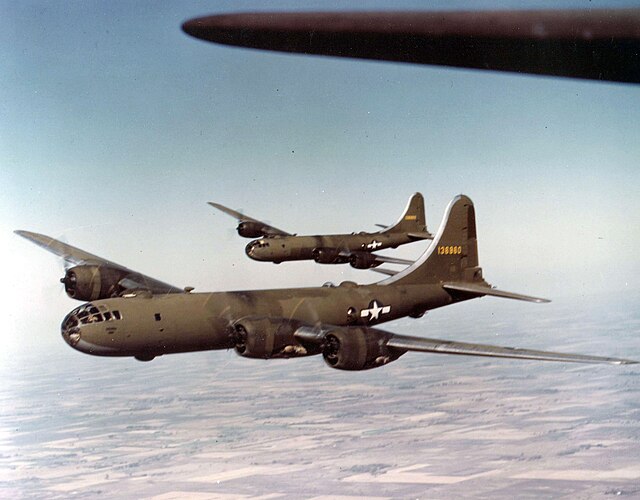Paul Warfield Tibbets Jr. was a brigadier general in the United States Air Force. He is best known as the aircraft captain who flew the B-29 Superfortress known as the Enola Gay when it dropped a Little Boy, the first of two atomic bombs used in warfare, on the Japanese city of Hiroshima.
Tibbets c. 1960
Boeing B-17D in flight
Tibbets with WASP pilots Dorothea Johnson Moorman and Dora Dougherty pose before their B-29 "Ladybird'
The "Tinian Joint Chiefs": Rear Admiral William R. Purnell, Brigadier General Thomas F. Farrell, Colonel Paul W. Tibbets, and Captain William S. Parsons
Boeing B-29 Superfortress
The Boeing B-29 Superfortress is an American four-engined propeller-driven heavy bomber, designed by Boeing and flown primarily by the United States during World War II and the Korean War. Named in allusion to its predecessor, the B-17 Flying Fortress, the Superfortress was designed for high-altitude strategic bombing, but also excelled in low-altitude night incendiary bombing, and in dropping naval mines to blockade Japan. B-29s dropped the atomic bombs on Hiroshima and Nagasaki, the only aircraft ever to drop nuclear weapons in combat.
Boeing B-29 Superfortress
Boeing assembly line at Wichita, Kansas (1944)
The length of the 141-foot (43 m) wing span of a Boeing B-29 Superfortress based at Davis-Monthan Field is vividly illustrated here with the cloud-topped Santa Catalina Mountains as a contrasting background.
YB-29 Superfortresses in flight








